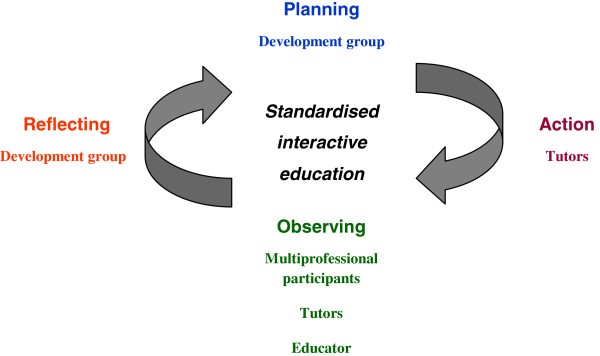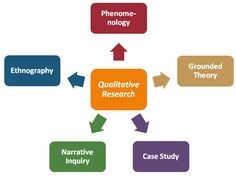Examples of Theoretical Framework in Qualitative Research
Theoretical framework, also known as a theoretical standpoint, is the foundation of a qualitative study. It guides researchers to analyze data and helps them interpret results. The theoretical framework is a leading idea in a qualitative paper, and it helps shape the research plan.
What is a Theory?
It is a set of ideas that explain the relationship among variables in a cause-effect relationship. It guides researchers to make inferences about results or answer a research question.
How Does a Theoretical Framework in a Qualitative Study?
In general, the theoretical framework presents assumptions about relationships among concepts in theory. It is then applied to the study to explain certain phenomena.
A theoretical framework in qualitative studies is usually based on an existing theory or theories. A proposed theoretical framework should be relevant to the study’s goals and objectives.
Theoretical frameworks can be presented in different ways, including visual models or diagrams used to illustrate relationships among concepts.
A theoretical framework is flexible. It can change as the study progresses, depending on the data collected. Researchers then check if their assumptions are correct, refine the framework based on results, or refine it as they go along the way.
A theoretical framework addresses three key questions:
- What do we think or feel about the phenomenon being studied?
- Do we seek to explain, describe, interpret, critique, support, or read?
- What might be the consequences of doing such work?
A theoretical framework is a type of theory that links the data and the subject of study.
Some examples of theoretical frameworks in qualitative research are:
Grounded Theory Approach


This type of inquiry uses emergent theories during data collection and focuses more on discovery rather than explanation.
For example, a researcher might start by asking: “What is the experience of early motherhood like in a particular culture?”
In this case, the grounded theory approach would guide you to collect interviews from mothers and then analyze data inductively to construct theories that emerge from the collected data.
The grounded theory does not try to explain results. It only focuses on describing the phenomenon in question.
Key assumptions of this approach are:
- The theory is created during the research process
- Theory development is continuous
- Theoretical sensitivity is the basis upon which a framework is built
- The theory can explain something that would otherwise be unknown
Participatory Action Research


This inquiry focuses on people too, who are actively involved in research. The participants also have a say in directing the inquiry to address their needs.
The main assumptions in this approach are:
- Knowledge is developed through collaboration
- Collaboration requires community involvement
- The concept of power is acknowledged
- There’s no predetermined outcome
- Knowledge is both theoretical and practical
An example of participatory action research for a non-profit organization is to involve community members in the review of policies that affect them.
Critical Theory Approach
This framework helps researchers consider power relations within a society and emphasizes how access, voice, and representation are central to a study.
For example, the researcher might ask: “How have the effects of colonization changed the role of women in this culture?”
Here, the critical theory would inform your theoretical framework. This theory helps you explore power dynamics and their relationship to the subject of your study.
The critical theory framework will help you pay attention to the following:
- The intersection of various forms of oppression and power relations in a society
- Examining the influence of other structures such as capitalism, colonialism, and patriarchy
- The relationship between structural forces and individual behavior
- Studying the role of knowledge and how it is produced
- How dominant discourses silence people
- The significance of social action
Driving Force Approach
This framework helps you explore the motives behind people’s actions and decisions. It aims to explain why something happens.
For example, the researcher might pose the question: “Why do African-American girls experience emergency room care differently than their Caucasian peers?”
The driving force’s approach would guide you to explore the motives behind people’s actions, which helps you answer this research question.
This approach taps into the following:
- The motivation that drives people to behave in a certain way
- Assumptions about human nature and the importance of individual action
- Use of case studies that are drawn from small samples
- Comparing different situations to see which factors have the greatest influence on decisions or actions
Semiotic Approach
This type of inquiry uses symbols and signs to help you understand how people construct meanings. It focuses on the processes through which meaning is influenced by social context.
For instance, the research question could be: “How does this culture define success?”
The semiotic approach helps you explore how symbols are used to construct meaning and how meaning is influenced by cultural context.
Researchers use this framework to determine:
- The use of signs and symbols
- Interpretative repertoires – the language people use to describe their experiences
- Discourses – the socially shared set of values, assumptions, and expectations at play in your study
- Conceptual metaphors – comparisons that people make with ideas or objects
- Cultural models – the shared understandings that link people to a particular cultural group
Phenomenological Approach
It focuses on subjective experiences, feelings, and thoughts. The goal is to understand the meaning people make of their lived experiences.
For example, the researcher might ask: “What is it like to go blind?”
This inquiry would utilize a phenomenological approach to guide your research process.
This framework seeks to examine:
- The unique experiences of the individual/group you are studying
- The influence of social and cultural factors on people’s beliefs, feelings, and behaviors
- The meaning people make of their experiences
- How people describe their own experiences
Transcendental Approach Framework
It is used to explore the “true” or universal aspects of human nature that exist independent of social context. It is a form of philosophical inquiry.
In the example above, the researcher might ask: “Is going blind psychologically devastating?”
This type of framework would help you explore the “fundamental,” universal aspects of human nature. The researcher focuses on broad, conceptual questions about human nature.
Feminist Approach
This framework helps researchers consider how women are portrayed and treated within society.
An example of a research problem would be: “How does this society define a ‘real man’?”
In this case, the feminist approach would guide you to explore how women are portrayed and treated within society.
Symbolic Interactionism Framework
According to this framework, the meaning of a situation for an individual is influenced by social interaction.
For example, consider the following research question: “What is a ‘high status’ job in this culture?”
The symbolic interactionist approach would guide you to explore how individuals define and negotiate their status within a culture, which helps you answer this research question.
Functionalism Framework
This approach focuses on how institutions, objects, and behaviors are interconnected within a culture.
For example, the researcher could pose the question: “How does this society keep its history alive?”
The functionalist framework would guide this research question. It helps you explore how institutions, objects, and behaviors are interconnected for this culture.
Postmodern Approach
In this framework, knowledge is fluid, and there are no absolute truths. It challenges traditional concepts of hierarchy, power, and knowledge.
For example, you might pose the question: “How do cultural norms construct gender in this society?”
The postmodern approach would guide you to explore how knowledge is fluid, and there are no absolute truths.
This approach is fluid, so the researcher is free to explore any topic they are interested in. It does not adhere to a specific set of guidelines. Instead, the researcher is free to explore any topic they are interested in.
The researcher is free to pose broad, open-ended questions that focus on the unique characteristics of their study.
Marxist Framework
This framework looks at how class, race, and gender influence the way people live.
For example, a research question could be: “What is the meaning of ‘success in this culture for a female business executive?”
In this case, the Marxist framework would help you explore how class, race, and gender influence the way people live. This framework would help you consider the unique experiences of a female business executive.
Considering the impact of race, class, and gender on people’s lives within this society would guide your research process.
Constructionist Framework


This approach helps you analyze language and meaning-making systems. It focuses on the process through which social structures are created and maintained.
For instance, if your research study is about the youth’s understanding of their rights, you might ask: “What is considered ‘childhood’ in this culture?”
The constructionist framework would guide you to explore how social structures are created and maintained. This understanding will help you answer the research question.
When using the constructionist framework, your research study is more of a process than a result. The constructionist approach focuses on the process through which social structures are created and maintained. It helps the researcher consider language and meaning-making systems.
Emergent Design
The emergent design focuses on collaborative research. It is used when the researcher wants to bring multiple perspectives into their study and has little control over the research process.
An example of a question you could ask is: “What makes a marriage successful?”
In this case, in an emergent design, you would be collaborating with multiple people or participants to answer this question.
Emergent design framework makes it easier for you to invite participants to share their insights and opinions during your study. This approach will help you involve more people in your research process. It also enables you to gain a deeper understanding of a specific topic.
Individualist Approach
It works by identifying, understanding, and describing the behavior of individuals within a society.
For example, you might develop a research question such as: “How do people in this culture experience illness daily?”
The individualist approach would help you explore the behavior of individuals within the society.
This framework is best used when the researcher needs a deep understanding of an individual’s experience. It is helpful for exploratory research where you are noticing patterns within people’s behavior.
Radical Framework/Subversive Methods
The radical approach is focused on social change and liberation. The research method uses a major research question to engage in a political project.
For example, you might ask: “How does this culture perpetuate inequality?”
In the radical framework/subversive methods, you would engage in a political project to answer the research question.
The main difference between the radical approach and other frameworks is that you must form a major research question for this approach.
Using the radical framework also helps the researcher ensure that people have a voice in their studies.
Critical Race Approach
This approach helps understand and challenge racism through the lens of law. In this framework, you analyze how laws and other societal structures impact people from different backgrounds.
You might ask: “What are the barriers to education for people of color?”
In this case, the critical race approach will help you explore how laws and other societal structures impact people of different backgrounds.
If you are interested in the intersection of law and social justice, this approach may be for you. It helps you understand how the law works and enables you to develop a productive way to challenge racism.
Categories of Theoretical Frameworks
- Theoretical orientation: it provides the conceptual basis for your study. It guides you through answering what’s important and why while also helping you determine which data are relevant.
- Philosophical perspective: this helps researchers address ethical considerations during their studies. For example, political or social justice orientations are helpful in that they help researchers consider the effects of their research on society at large.
- The ontological perspective focuses on what is real and how it might be depicted in a study. Does it address questions like, ‘What kinds of things exist? What is our role as researchers?
- Theoretical paradigm: this provides the structure for directing your research. It highlights how you determine what is relevant and influences how you need to do your work.
The Importance of Theoretical Frameworks in Qualitative Research
- A theoretical framework is critical because it guides you through answering research questions and synthesizing your data.
- It influences how you determine what is relevant and how you locate, select, analyze, and interpret your data.
- It also helps to determine the worth of your study, and it helps to give a structure for guiding your research.
- A theoretical framework also provides a lens that helps you interpret your findings.
- It helps you assess the validity and credibility of your data. An example is: studying a phenomenon that impacted people from different cultures. You might look at the various theoretical orientations to help you interpret your findings.
- Theoretical frameworks are analogous to maps that help researchers trace out the terrain of their research. Without a map, you would not know where to go and thus, misguide your research. Likewise, theoretical frameworks help researchers stay on track throughout the research process.
- A good theoretical framework guides you to ask the right questions. For example, knowing which theoretical perspective is most appropriate for your research will help you choose the right research questions and thus, make your inquiry more focused.
Theoretical Framework Vs. Conceptual Framework.
It’s important to note that theoretical frameworks and conceptual frameworks are not synonymous. Below are the main differences between the two:
| Theoretical framework | Conceptual framework |
| A theoretical framework guides you to answer your research questions. It doesn’t provide a coherent system to understand the world. | A conceptual framework like social constructionism has systems that help you answer research questions. It also enables you to understand the world better. |
| Involves the application of theory partly or entirely | Only the relevant concepts are synthesized |
| Widely used to cater to the current problem and beyond (Broad scope) | Deals with the problem at hand (narrow scope) |
How to Develop a Strong Theoretical Framework for Your Study
When reaching the theoretical framework section of your proposal, you might feel a sense of panic. It’s common to feel overwhelmed by the theoretical frameworks that are available to you. The following are the steps you can take to develop a theoretical framework for your study:
- Identify what you already know. It’s helpful to reflect on the knowledge that you already possess about your topic. Existing knowledge can provide the basis for developing a coherent theoretical framework.
- Choose the theoretical perspective that will provide the best framework for your study. It’s important to consider which theoretical perspective is best suited for your research topic. For example, if you were interested in conducting a critical ethnography, you would use the critical theory perspective.
- Develop your framework by synthesizing different theoretical perspectives. When developing your framework, make sure to draw from multiple theoretical perspectives and integrate their unique contributions.
- Make sure your framework is relevant to your research topic. For example, if you were studying prison reform, a humanistic perspective might not be appropriate. Instead, symbolic Interactionism would be more relevant.
- Use a theoretical perspective that you feel comfortable with and facilitates understanding of the field you are studying.
- Address how your theoretical framework will help guide your research within that methodology.
Summary
Sometimes a research question is theoretical. Other times it can be a practical one. To use a theoretical framework means to engage in the way of thinking about the topic under study. It is a way to develop a meaningful question about something which can help you better understand it.
Theoretical frameworks are a set of assumptions based on a theoretical perspective. At its best, a theoretical framework guides you through answering your research questions. Choosing an appropriate framework for your study will help you ask the right questions and make more informed decisions.
A theoretical framework will help you explore your research topic from different angles. It must be relevant to your research topic. The theoretical framework you choose must be able to stand up to scrutiny, so it’s best to use well-known and established frameworks.


I‘m a freelance content and SEO writer with a passion for finding the perfect combination of words to capture attention and express a message. I create catchy, SEO-friendly content for websites, blogs, articles, and social media. My experience spans many industries, including health and wellness, technology, education, business, and lifestyle. My clients appreciate my ability to craft compelling stories that engage their target audience, but also help to improve their website’s search engine rankings. I’m also an avid learner and stay up to date on the latest SEO trends. I enjoy exploring new places and reading up on the latest marketing and SEO strategies in my free time.







